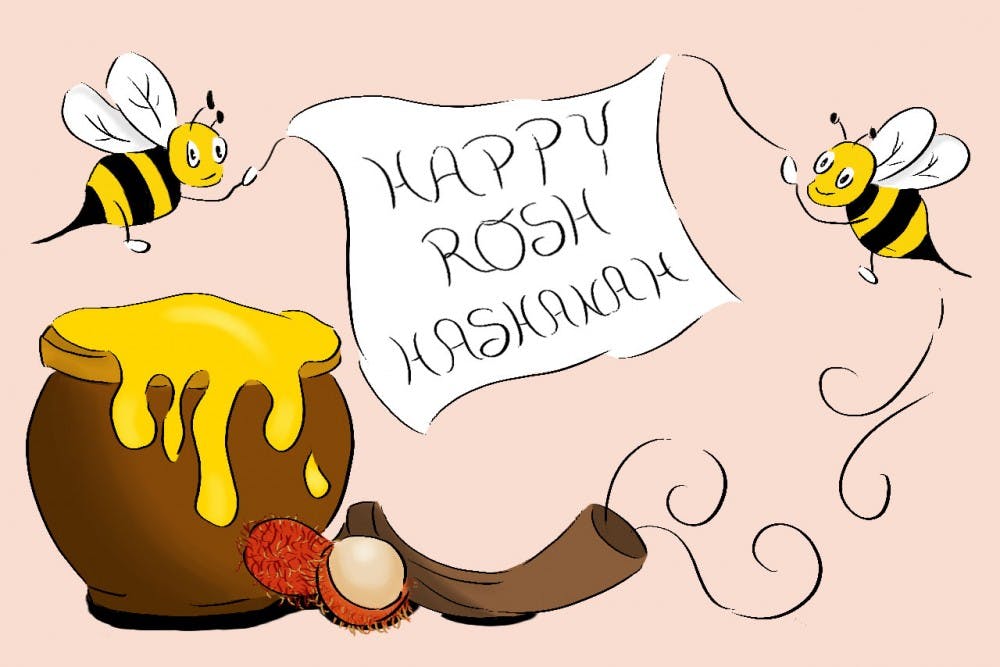The seventh month of the Hebrew calendar, also known as Tishrei, is a time of many holidays for the observant Jewish community. The month begins with the celebration of Rosh Hashanah, the Jewish New Year, when Jews reflect on the past year and look hopefully toward the one to come.
The Jewish faith follows the lunar calendar, but in the Gregorian calendar, Rosh Hashanah falls on Sept. 20-22 this year.
Rosh Hashanah celebrations last for two days, and the local synagogue, the Chabad center on Ash Avenue, will be hosting a myriad of services in recognition of the holiday.
Culminating the services, the Chabad at ASU group will be holding a dinner that is open to all, regardless of faith. Attendance only takes a quick RSVP beforehand.
Chabad is the one of the largest Hasidic sects in Judaism, and the campus Chabad chapter's website heralds itself as a “a home away from home for every Jewish student at ASU.”
Rabbi Shmuel Tiechtel of Chabad at ASU, has been a Rabbi for nearly 17 years. He said that his family have served as Rabbis for 13 traceable generations, so he knows the holiday well.
“The Torah writes that Rosh Hashanah is the first day of the seventh month of the lunar calendar," he said. "We believe that (Rosh Hashanah) is the sixth day of creation. It is what we call the Day of Judgement."
Tiechtel said Rosh Hashanah is a time of the year when everything from the previous year is out in the open, as well as a time that sets the tone for your upcoming year.
He also said there is major symbolism at play within the traditions of Rosh Hashanah. One of the biggest is the blowing of the shofar, a ceremonial instrument made out of a ram's horn.
“The blowing of the shofar is a call to awakening, a symbolic wake-up call to return home," Tiechtel said. "Spiritually and physically people wander far from home, and the sound of shofar is one of reconnection to the right way of life."
Another major symbol of Rosh Hashanah is the consumption of sweet food, specifically the dipping of apples in honey to have a “sweet” year. The ingredients represent the dichotomy of old and new, Tiechtel said.
“Honey is something that even when it gets old it does not spoil," he said. "An apple on the other hand has to be new or else it rots. This is a representation of respecting the traditions of the past, while at the same time embracing modernity and change,” says Tiechtel.
Rabbi Mendy Rimler of Chabad at ASU said the holiday is laden with other symbols.
“Rosh Hashanah literally means the head of the year," Rimler said. "In accordance with this, people will put an animal’s head on the table, usually a fish head, but sometimes a ram or goat depending on the year."
He said this symbolizes how the head gives energy and direction to the whole body. The brain controls our visions and goals, so the head of the year can dictate how the rest of the year goes.
Chabad at ASU mainly serves the ASU Jewish community, but it also serves Jews from the greater Phoenix area, especially during the holidays, Rimler said.
Daniel Koenigslieb, a film junior, said he was born into a home of conflicting faiths. His father is Catholic and his mother is Jewish. He celebrated Rosh Hashanah for his whole life before coming to college.
“For a long time I resented my upbringing and turned away from all faith," Koenigslieb said. "About six months ago I decided to get involved again for personal reasons. Tradition is very important, and few traditions run as deep as Rosh Hashanah."
Reach the reporter at aalmouai@asu.edu or follow @shazzam_96 on Twitter.
Like The State Press on Facebook and follow @statepress on Twitter.




